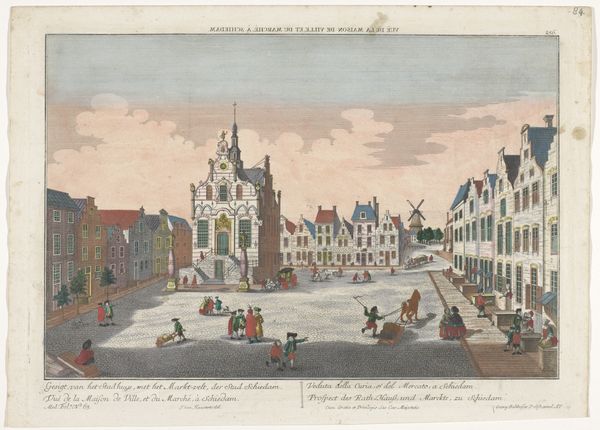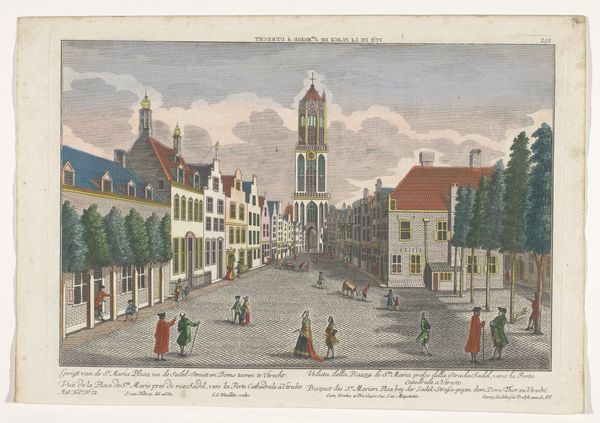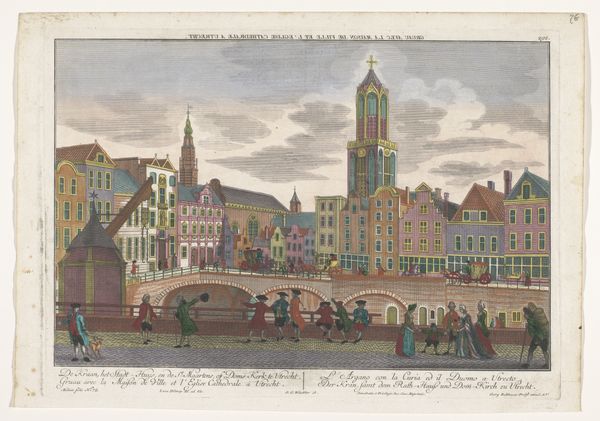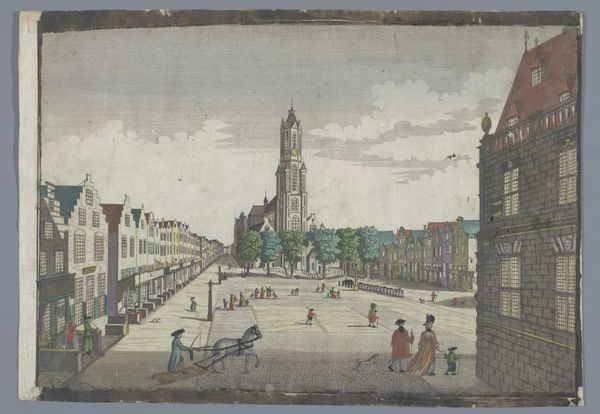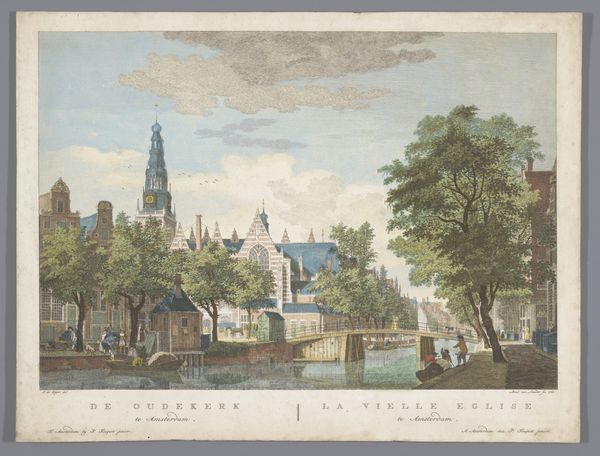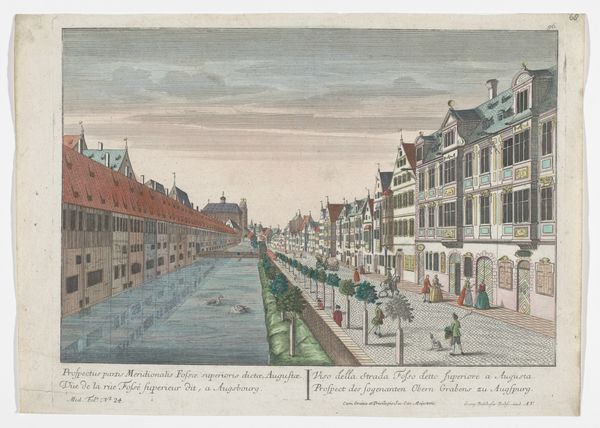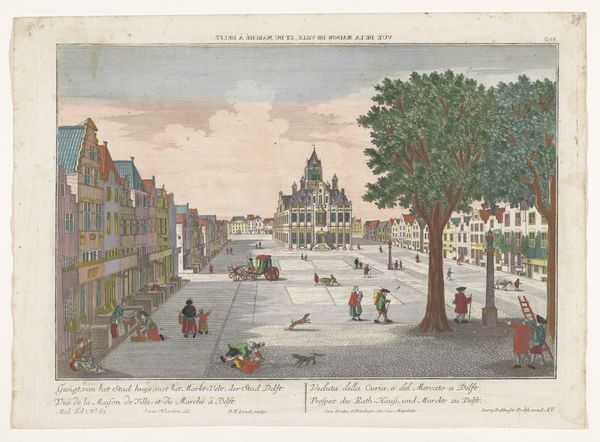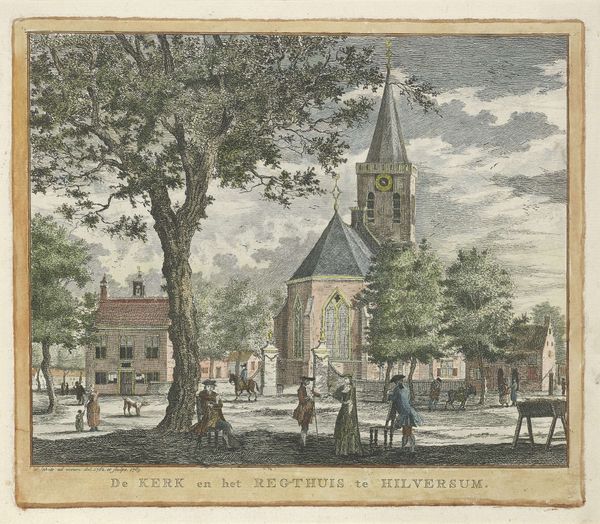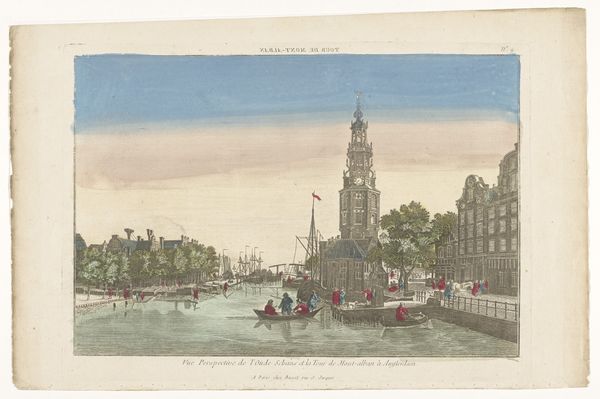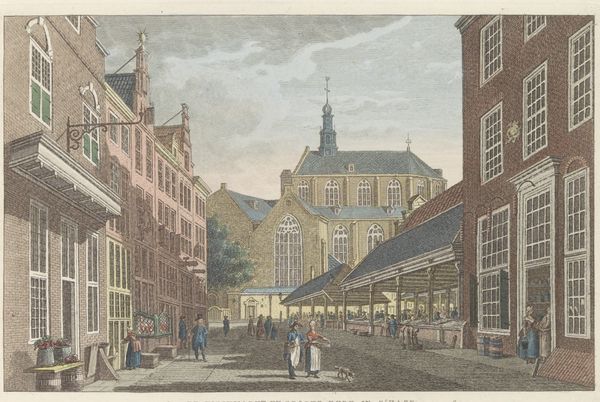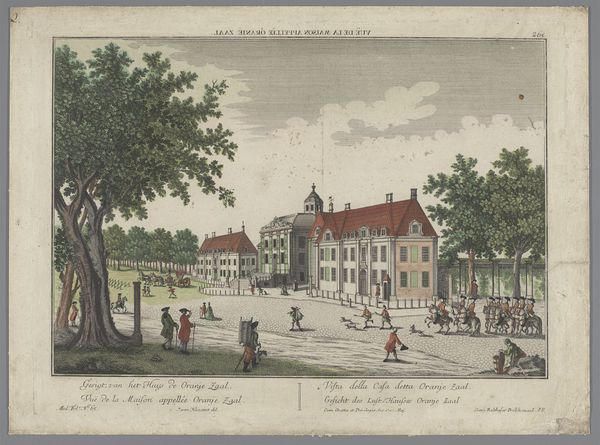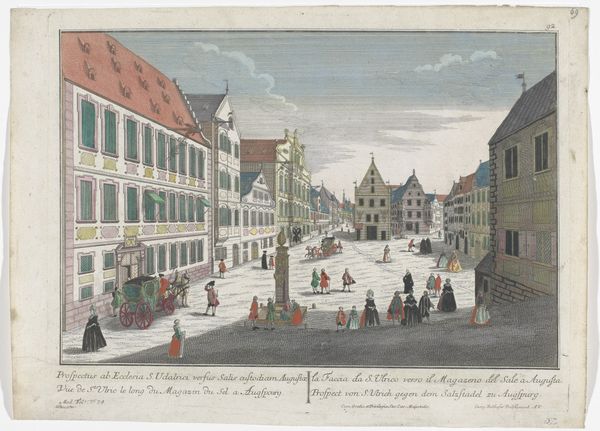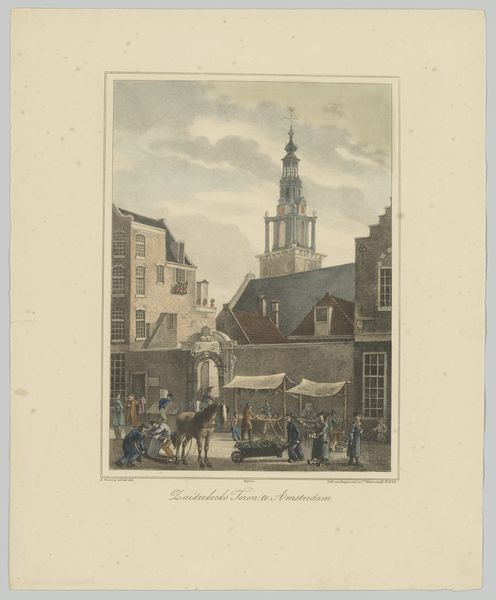
Dimensions: height 326 mm, width 449 mm
Copyright: Rijks Museum: Open Domain
Georg Balthasar Probst made this view of the Nieuwe Kerk in Delft as a hand-colored etching. Etching is an indirect intaglio process. A metal plate, often copper, is coated with a waxy, acid-resistant ground. The artist then scratches an image into the ground with a pointed tool, exposing the metal. The plate is immersed in acid, which bites into the exposed lines, creating grooves. The plate is then inked, and the surface wiped clean, leaving ink only in the etched grooves. Damp paper is laid on the plate, and both are run through a press under high pressure, transferring the ink to the paper. Finally, the print is hand-colored. Each of these stages demands skillful labor. The acid-biting process alone requires immense care. This print gives us a fascinating glimpse into 18th century Delft, but it's equally compelling as a demonstration of human ingenuity, skill, and effort. Considering these aspects brings us to a fuller understanding and appreciation of its value.
Comments
No comments
Be the first to comment and join the conversation on the ultimate creative platform.
